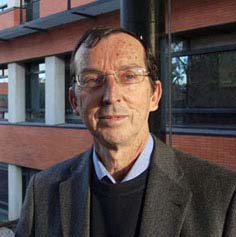
An international team, which Cavanilles Institute is involved with, has discovered that the natural selection which makes the second generation neurons survive in the brain does not depend, as it was thought so far, on the contact they establish with original neurons but on their own internal clock. This information calls into question the classical explanation on how the number of neuronal cells is determined, which is one of the most important questions of human brain’s biology. The Mexican neurobiologist and Príncipe de Asturias for Research award winner Arturo Álvarez-Buylla from University of California has led the research that has been conducted in cooperation with the professor of cell biology’s team José Manuel García Verdugo from Universitat de València.
The decision making process is the result of the establishment of exciter and inhibitory signals, whose interaction creates very complex processes in the cerebral cortex. The inhibitory circuits in this zone are made up of interneurons (neurons linking sensory neurons to motor ones) coming from other precursos cells which are eliminated during the postnatal development.
Getting to know how the final number of neurons in the brain is determined is vital for neuroscience, since during the embryonic stage there is an overproduction of this kind of cells.
Up to now, it was thought that some neuronal populations’ death was caused by neurotrophic hypothesis. Nevertheless, the resarch reveals that some neuronal populations’ control is caused by intrinsic signals of these neurons, regardless their environmental conditions.
En el estudio con el modelo animal, publicado en la revista Nature, los autores han descrito cómo hasta un 40% de las interneuronas corticales del cerebro del ratón son eliminadas durante los primeros días de vida. “Pero la importancia de este descubrimiento –comenta J.M. García Verdugo- radica en que esta cronología se repite independientemente del entorno de señales a las que las células estén expuestas”.
Two main hypotheses can explain the process. On the one hand, there is the possible creation of an excessive number of interneuronal precursors as a preventive measure when facing the existance of faulty precursors. On the other hand, the possibility that this neuronal type receives survival signals exclusively through its own sister interneurons, the via still unkown.
This research’s implications are important, since the interneurons have a vital role in the physiology of the cerebral cortex. Their change has been related to neurological diseases like epilepsy, schizophrenia, and Alzheimer’s disease. Then, the deepest knowledge of its working would carry a better understanding of the brain’s pathology and a possible design of new therapeutical measures.
More information HERE.
Last update: 8 de october de 2012 16:30.
News release



















